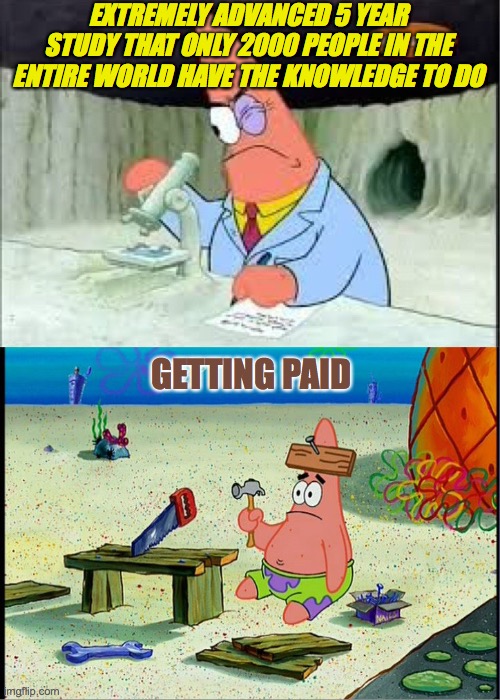Bureaucracies in Science
Short article. Won’t take much of your time.
I wanted to share this little inside information I heard from a scientist.
Sign up for the Newsletter on topics nobody wants to talk about
“How many manuscripts have you published?” is the scientist equivalent of “How much can you bench, bro?”. So much comes down to being published, and in what type of journal. Someone who has their name on more papers is immediately regarded in higher esteem, more likely to be invited to conferences, give talks about their research or the field, become board directors, get publishing contracts and most importantly, get funding.
Funding is the lifeblood for scientists. The associate professors spend most of their time writing proposals for funding & submitting to journals while their aspiring team are carrying out the research to assemble the papers. Without the papers getting accepted–the money goes to another lab, which enters into this feedback loop (less papers published, less funding, less staff, less research, less papers published, etc). The ol’ Publish or Perish problem.
So, here’s your inside information…First I’d appreciate it if you check out our pages of free articles and doubly appreciate it if you share your favourite one!
To mitigate the immense competition and bureaucracy that the scientific community has become, some labs have a trick to improve the chances of getting accepted into a journal. They will have all their data, research results, discussions, citations and everything complete but they will deliberately submit only a portion of the data. Typically there’s many charts, tables, graphs attached referencing the findings in a completed manuscript.
Naturally, the journals will professionally come back with “Ok, it looks interesting but what is this supposed to be, you only have 1 chart & 1 table…it’s hardly complete”. At which time the journal will add with something like, “We like what you’ve done, but you’re lacking a lot of vital information, we need data, references, more results–you have 13 weeks to submit the more data for a potential resubmission”.
For most scientific matters, especially biological, 13 weeks is not enough time to submit data that hasn’t been completed already–but, it has been completed. The lab will submit the original data that was initially excluded. The scientists can play innocent in case the data/charts are not as good as they could be because they can play victim– “well, we only had 13 weeks, so this is what we could come up in that short period of time”. The data looks very impressive for the terms given and a whole lot more striking than the first submission. They will gain acceptance to the Journal.
For the sake of playing possum and waiting out the extension time, they will play politics to get their way. It’s much better to get published at a later date than never at all as far as the labs are concerned. As I said, the more papers published, the more funding, the more staff involved, etc. etc. This is what happens when everyone works 80 hours a week for mediocre wages.
OnTheBall is not Nature or PLOS One, but if you are a scientist who wish to write an article about your field (or anything of interest that you believe people should know about) follow this link here–Looking forward to hearing from you!
Click here to Predict the Future!
#StayOnTheBall


